Sandweiler (Luxembourg) German War Cemetery — Visited a Week after Deutschland’s Volkstrauertag — Germany’s National Day of Mourning
© 2014 Peter Free
26 November 2014
Falling autumn leaves accentuated the stillness of this place
Eleven days after spending Veterans Day at Luxembourg American Cemetery and Memorial at Hamm, we visited the silence at Sandweiler German War Cemetery.
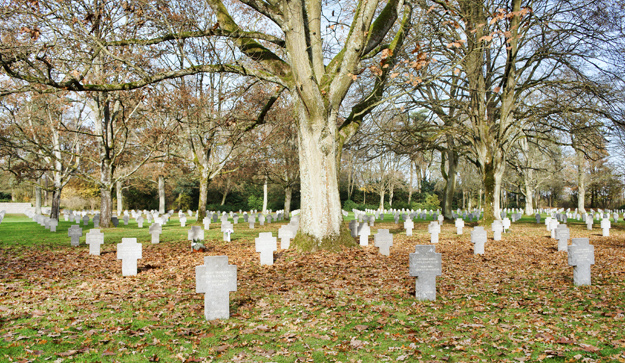
Its graves also commemorate World War II’s Battle of the Bulge. There are, however, a handful of graves belonging to German soldiers who died in 1940.
Our visit came one week after Germany’s National Day of Mourning (Volkstrauertag). Given Germany’s geographic proximity, more of Sandweiler’s stone markers had flowers and wreaths beside them than did the American cemetery at Hamm on Veterans Day.
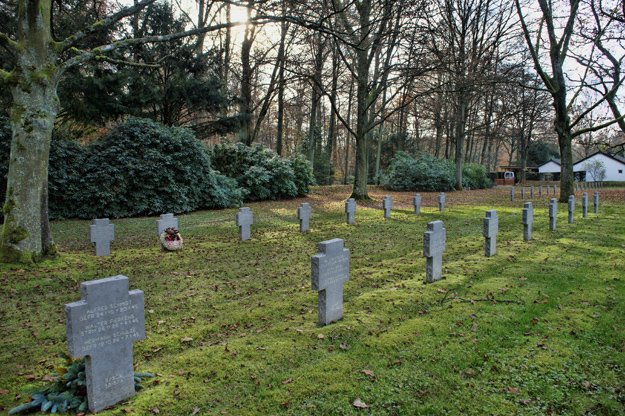
Numbers
10,913 German soldiers are buried here, 4,829 of them in the “comrades” mass grave at the head of the cemetery. Of these, 4,014 were subsequently identified by name. Bronze plaques, partially encircling the huge cross there, list them with their dates of birth and death.
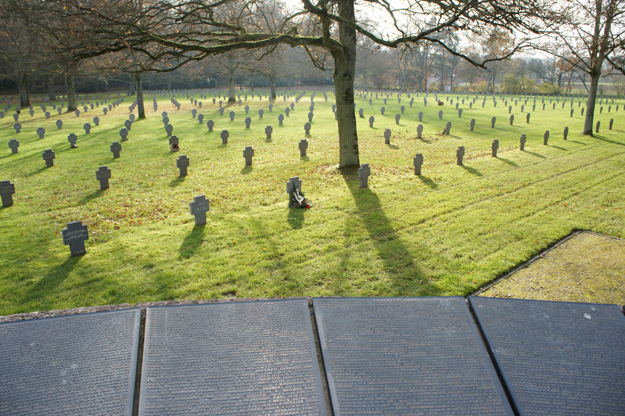
In the tombstone-aisled graveyard, some of the fallen are buried six per plot, three on each side of the marker. Others remember only two people per side. Many of these are marked only with, Ein Deutscher Soldat.
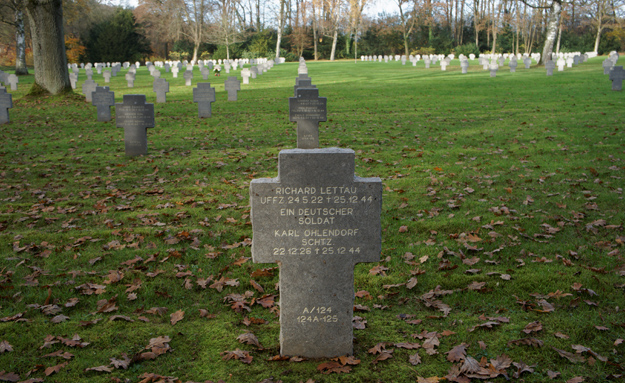
Walking the rows
I noticed some 17 year olds and a few soldiers who died on Christmas eve, Christmas day, and the day afterward.
At least one cross bears only what appears to be a first name, as if copied from a cherished personal letter.
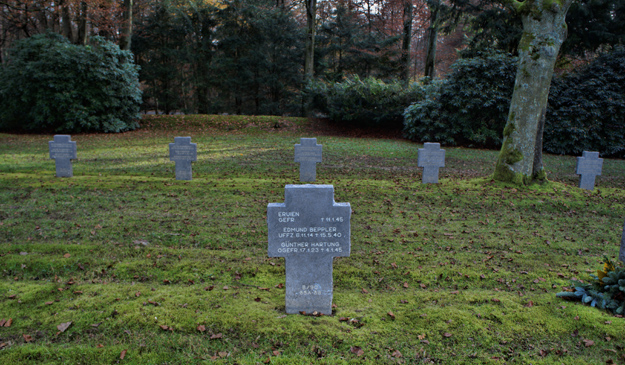
Unlike the cemetery at Hamm, Sandweiler’s rows are a little ragged
The geometric, chaos-fighting comfort of the American Cemetery’s inspiring symmetry is absent. And the ground at Sandweiler is noticeably less even.
Large empty swaths of open space, like grass covered former access roads, run from one end to the graveyard to the other. Filling blanks in this story, I imagine (perhaps incorrectly) trucks bearing dozens of corpses negotiating their row by row ways to their cargo’s final resting places.
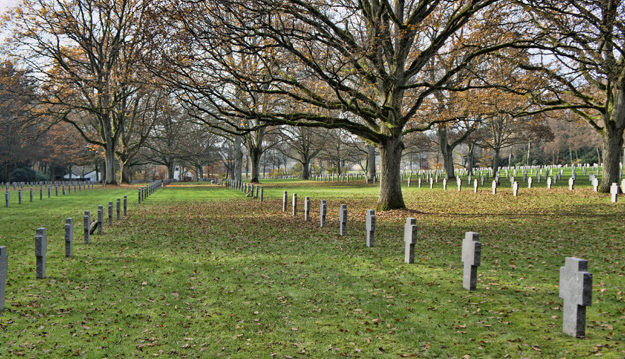
Trees
Mature trees, sprinkled within the cross-marked expanse, lend living grace to solitude.
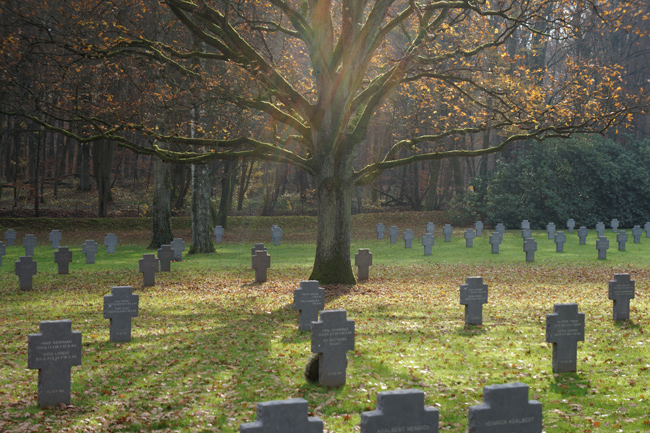
Trees are absent from the marker-rowed grounds at Hamm. Were it me buried in either place, I probably would like my engraved name to be warmed by companionship from a friend in leaves.
My father’s generation
Battle of the Bulge fighting was vicious, but American retribution apparently was not. The US Army’s Burial Service began the cemetery at Sandweiler with 5,599 German graves, each reportedly marked with a wooden cross.
The Service simultaneously also built the American cemetery at Hamm, less than 2 kilometers away. I find myself wondering whether any among the burial corps worked at both sites and what conflicting emotions they felt.
The moral? — Sandweiler’s entrance is marked with the message that Germany took from World War II
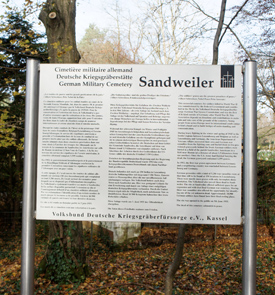
In the sign’s three languages:
Die Toten dieses Friedhofes machen zum Frieden.
Literally — “The dead of this cemetery make for (or toward) peace.”
Les morts de ce cimetière sont une exhortation à la paix.
Elegantly, as is typical of French — “The dead of this cemetery are an exhortation (or urging) toward peace.”
The dead of this cemetery admonish to peace.
Our English “admonish” is (maybe) the most accurate rendition of the intended German thought. Admonish implies past mistakes and implicitly “exhorts” better future behavior.
This is a thought that we Americans could also take to heart, regarding our violent overseas performances from Vietnam on. I walk the rows accompanied by the sense of lessons unlearned.
 PeteFree.com
PeteFree.com